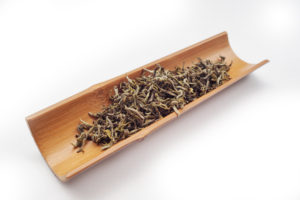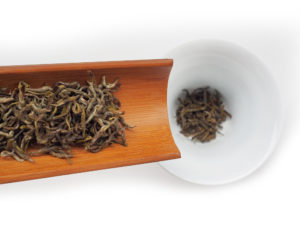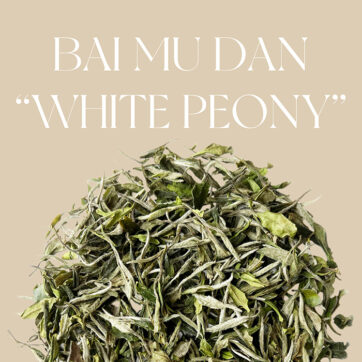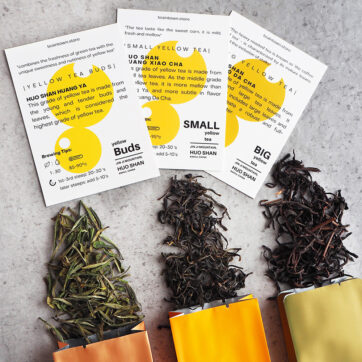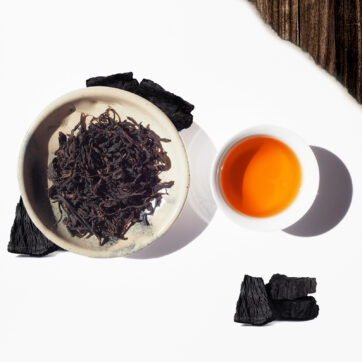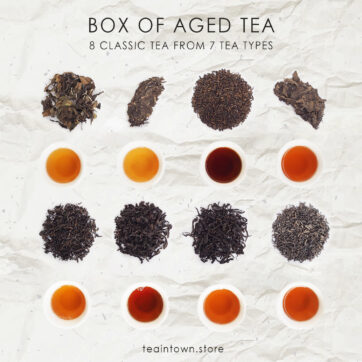Bei Gang Mao Jian 北港毛尖
Special Yellow Tea made of downy Mao Jian Tea
Bei Gang Mao Jian, a kind of Small Yellow Tea. Mao Jian tea, translated as fur tip tea, is a general term for the shape and the furry appearance of young and tender tea leaves. It is usually named according to the region, such as the famous Mao Jian Green Tea – Xinyang Maojian. But not all Mao Jian tea are green tea, just like this Bei Gang Mao Jian, which is made into yellow teas.
The name “Bei Gang” means northern shore, is the place of its origin, located in Yue Yang, Hunan province of China. There are two famous kinds of Yellow tea from Yue Yang, one is Bei Gang Mao Jian, another one is Jun Shan Yin Zhen.
Bei Gang Mao Jian is produced in the mountains around Bei Gang Lake. The tea area has a mild climate, abundant rainfall, rising steam from the lake surface, creating a veil of mist scattered over the northern shore of Yonghu Lake, forming the unique natural environment of Bei Gang Tea Garden.
It was one of the 10 kinds of tribute tea in Tang Dynasty. Yong Hu(邕yōng湖) is the ancient name of the Bei Gang Lake, so the tea was also called as “Yong Hu Cha” (邕yōng湖茶) in Tang Dynasty. It is said that when Princess Wencheng got married and went to Tibet, she brought this tea with her. This tea has enjoyed a long-standing reputation since the Tang Dynasty and is one of the famous teas in history.
Appearance of Bei Gang Mao Jian
The appearance of Bei Gang Mao Jian is small and straight but slightly twisted, it has strong and fat tea buds and the dry leaves are apparent with pekoe. After brewing, the tea soup is golden, and the wet leaves is yellow and bright.
Taste of Bei Gang Mao Jian
It is soft and brisk in its mouthfeel, not grassy and vegetal at all. It taste sweet, with light honey and pekoe flavor.
Making Process of Yellow Tea
- Picking: 5-6 days after the QingMing Festival, the standard is one bud and two or three leaves, and it is picked on a sunny day, no insects damage the leaves, no purple leaves, no fish leaves, no stalks, and the same day of picking.
- Green-killing: commonly known as frying. The frying method is very different from that of ordinary green tea and yellow tea. Beigang Beimaojian adopts the method of puttingleaves into the frying wok at high temperature, frying and killing at medium temperature. At first, the temperature of the wokis required to be above 200°C, tea maker then throw in 2000 grams of leaves and stir-fry for 2 minutes, then cool down to about 100°C, and then stir-fry for 12 to 13 minutes. During the pan-frying, due to the high water content of the tea leaves, the chlorophyll is severely damaged, which lays the foundation for the unique quality required by yellow tea.
- Rolling/ kneading: After green-killing, the pot temperature is about 40°C and the moisture content of the tea leaves is about 55%, it is being rolled in the wok.When the tea leaves are in the shape of strands, take them out of the pot.
- “Patting sweat”: The so-called “patting sweat”is a step silmilar but slightly different to “Men Huang”- the step of wrapping the tea for other Yellow Tea. “Patting Sweat” means that the tea are placed in a bamboo batten, piled up and patted tightly, and then being covered with a cotton cover to keep warm and moisturize for oxidation. This step last for 30 to 40 minutes to make the tea leaves moisten and turn yellow.
- Re-frying and re-kneading: after “Patting sweat”, the tea is put back into the wokfor re-frying. The temperature of the pot is 60-70°C, and stir-fry while kneading until the tea are tightly rolled and the pekoe is exposed. When it is about 80% dry, take it out of the wok and spread it out to dry.
- Drying: Dry with charcoal fire after spreading. After the tea leaves are dried, they must be spread out to dry, and then tightly sealed in boxes to make them ripe. After ripening, the buds and leaves are golden in color and moist, and become Beigang Maojian with high quality and shape.
Weight per pack: 25g
Tea Farm Location: Yue Yang, Hunan, China
Harvest Time: 2022 Spring / 2021 Spring
Characteristics:
Tasting Notes: Soft in its mouthfeel, not grassy and vegetal at all. It taste sweet, with light floral and pekoe flavor.
Tea Liquor Colour: Bright and light yellow
Dry Leave Appearance: Small and slightly twisted with strong tea, yellow-brown in colour, apparent with pekoe.
Wet Leaves: Yellowish green
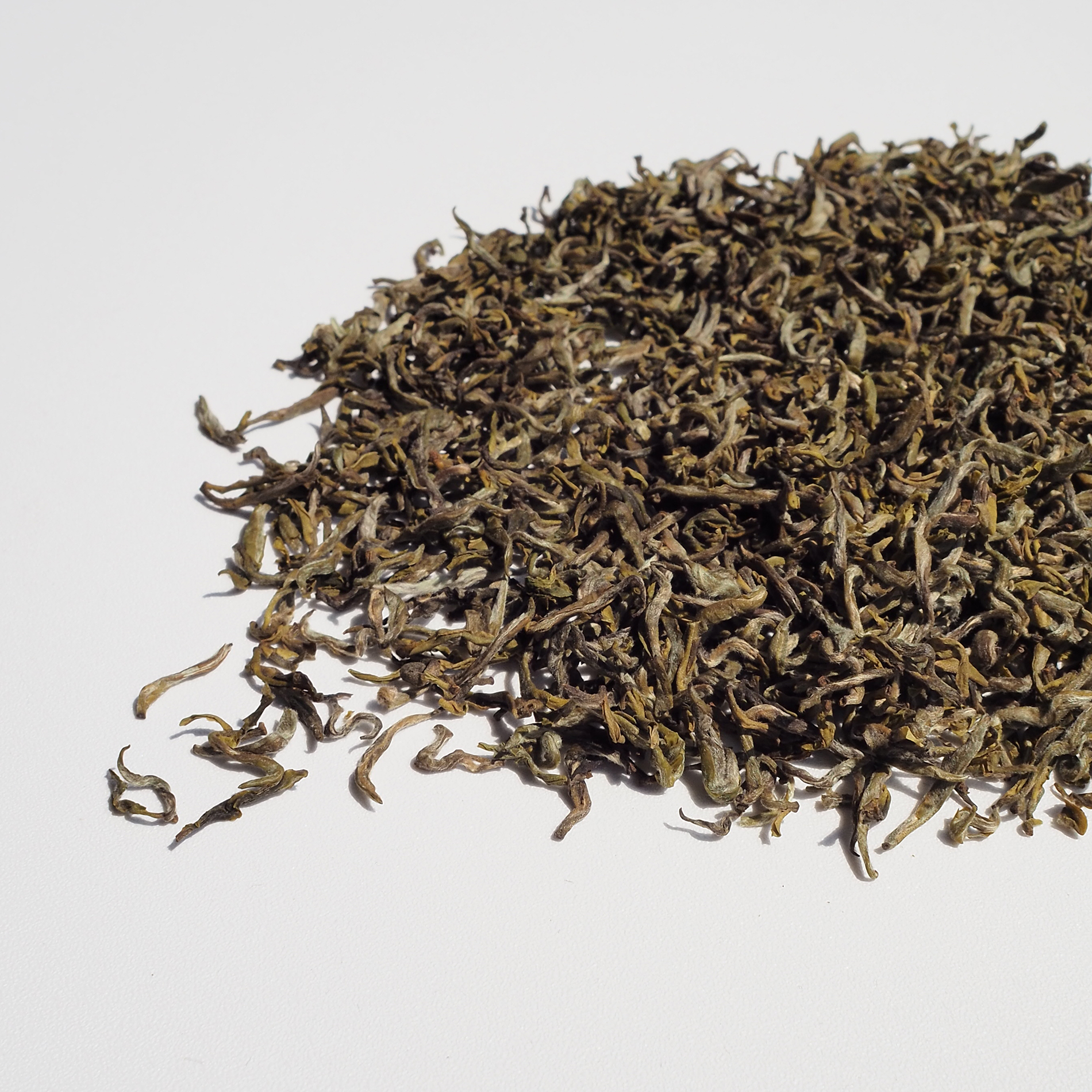

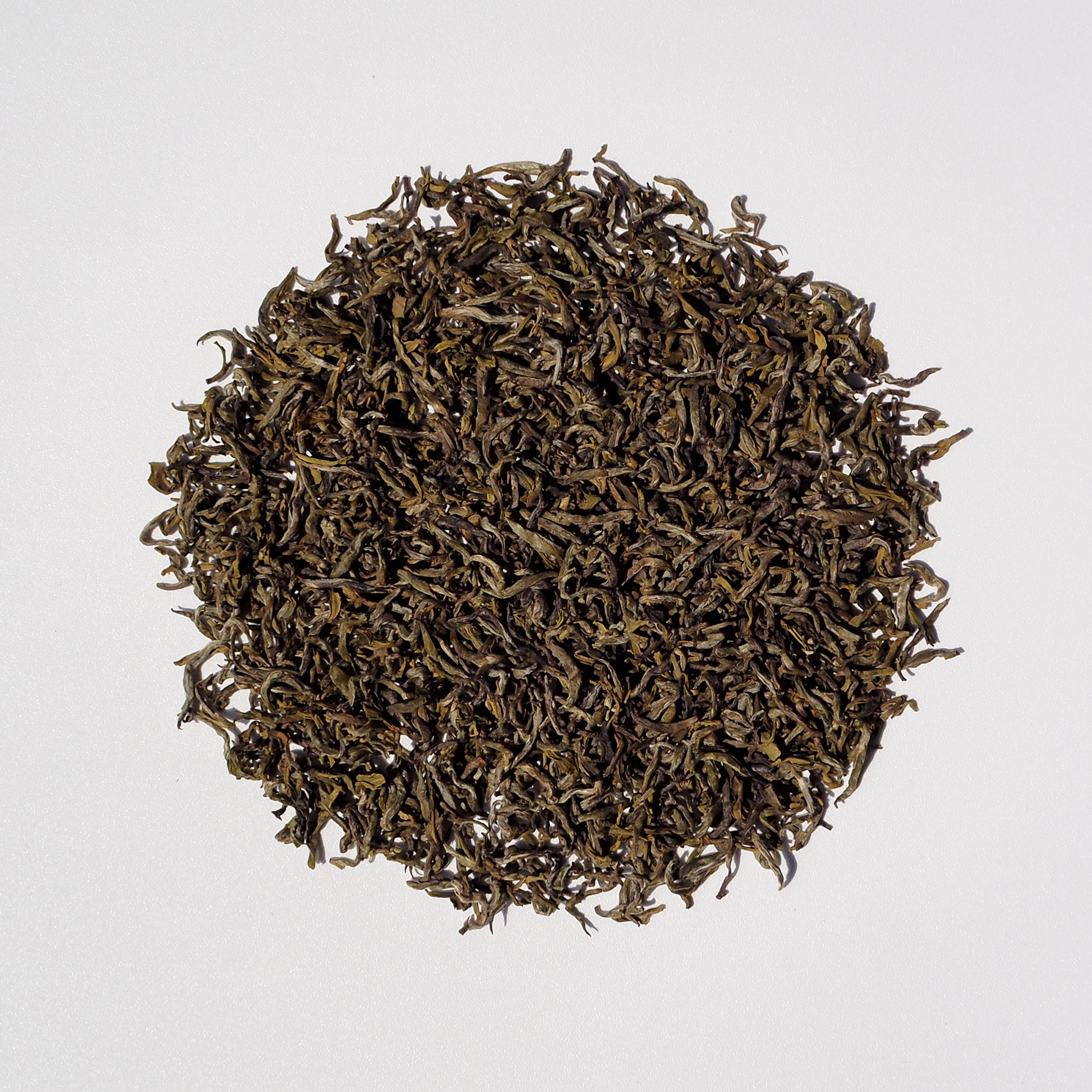


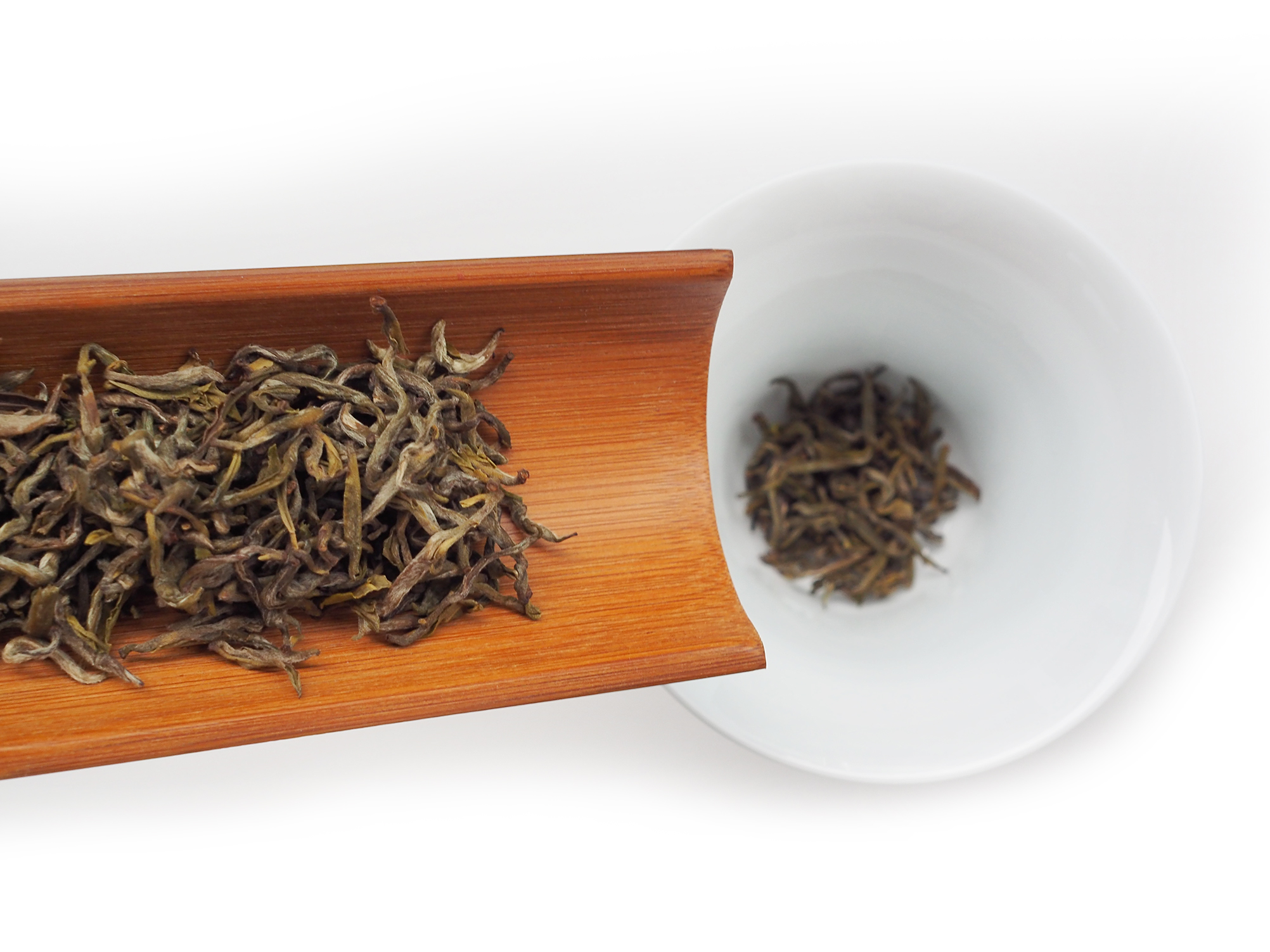
 If you purchase this product you will earn
If you purchase this product you will earn 

